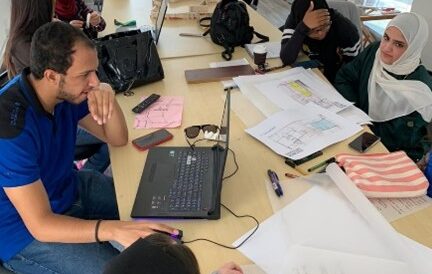In today’s dynamic educational landscape, the traditional methods of teaching are being augmented by innovative tools and technologies that foster deeper student engagement. As educators strive to create dynamic learning environments, they are increasingly turning to a wide array of tools that not only captivate students’ attention but also enhance their understanding and retention of complex concepts. In this blog post, we will explore some effective innovative teaching tools that educators can leverage to improve student engagement.
Gamification: Incorporating elements of gamification into the classroom can transform learning into an interactive and immersive experience. Platforms like Kahoot!, Quizizz, and Classcraft allow educators to create quizzes, challenges, and rewards systems that motivate students to actively participate and collaborate. By gamifying learning activities, educators can tap into students’ natural inclination towards competition and exploration, making lessons more enjoyable and memorable.
Virtual Reality (VR) and Augmented Reality (AR): Virtual reality and augmented reality technologies have the potential to revolutionize the way students learn and engage with course material. By immersing students in virtual environments or overlaying digital content onto the physical world, VR and AR tools enable educators to create interactive simulations, virtual field trips, and hands-on learning experiences. From exploring the human body in 3D to simulating historical events, these immersive technologies captivate students’ attention and deepen their understanding of complex topics.
Collaborative Learning Platforms: Collaborative learning platforms such as Google Classroom, Microsoft Teams, and Canvas facilitate communication, collaboration, and knowledge sharing among students. By providing a digital space for students to work together on projects, share resources, and provide feedback, these platforms foster a sense of community and collaboration in the classroom. Whether it’s collaborating on group assignments, participating in online discussions, or peer reviewing each other’s work, collaborative learning platforms empower students to take ownership of their learning and engage with course material in meaningful ways.
Flipped Classroom Model: The flipped classroom model flips the traditional approach to learning by assigning pre-recorded lectures or instructional videos for students to watch at home, freeing up class time for hands-on activities, discussions, and problem-solving. By engaging with course material outside of the classroom, students arrive prepared to participate actively and engage in meaningful discussions with their peers. The flipped classroom model promotes student-centered learning, fosters critical thinking skills, and encourages students to take an active role in their education.
In conclusion, effective innovative teaching tools play a crucial role in improving student engagement and enhancing the learning experience. By leveraging gamification, interactive whiteboards, virtual reality, collaborative learning platforms, and the flipped classroom model, educators can create dynamic learning environments that inspire curiosity, foster creativity, and promote deeper understanding among students. As technology continues to evolve, educators must embrace these innovative tools and leverage them to empower students to reach their full potential in the classroom and beyond.





The article precisely illustrates the significance of integrating technology to make a classroom lecture more involving, interesting, and inclusive. Currently, technology rules everything around us. If something is left, it will be covered by AI and, later, by generative AI.